Why should you use third-party plugins to export data from Woocommerce?
As you know, when you run an online store, it is certain that in some situations you will need to export various kinds of data externally relating to your orders, customers, and products. These databases will create unlimited opportunities to grow your Woocommerce business the next time. While Woocommerce also comes with a wide range of features that help you build an online store easily. In which there is a built-in product export that offers CSV file format. However, this platform also has some limitations, for example, it only supports exporting orders to XML types. Therefore, it is necessary for you to use the help of third-party tools to export this data in CSV.
How to export data from Woocommerce using the plugin?
Nowadays, there are tons of powerful plugins on the internet. It is difficult for you to choose which one to start. In today’s tutorial, we highly recommend using WP All Export plugins for some reasons.
First of all. WP All Export is considered one of the significant plugins that enable you to export your Woocommerce data in different formats. In addition, this plugin is beneficial in upload your items to the Google Merchant Center to support online advertising campaigns or automatically integrate your data with 100+ apps by using Zapier.
Moreover, if you took a lot of time to edit your products one by one via Woocommerce in the past. Now with the support of WP All Export, you can export them to a spreadsheet, bulk edit them, and then re-import them in no time. Even you have the ability to migrate your entire store to another site easily.
Now, don’t waste your time, we are going to share with you how to use this convenient sandbox feature and choose Woocommerce Store as the demo type through some of these tasks below.
A Simple WooCommerce Customer Export
For example, if you want to create a collection of Californian Customers for a marketing campaign. You need to track a similar process below to export from WP All Export.
Step 1: Select the type of data that you want to export:
- Let’s click on All Export > New Export in your dashboard. This will open the New Export screen.
- Here you can choose “Woocommerce Customers” as the post type.

You can also select any type of WordPress or Woocommerce data from the drop-down list, consisting of data from third-party addons or plugins.
Step 2: Apply filters (optional)
1. After you have chosen a post type yet, an Add Filtering Options panel will display near the bottom of the screen. Specify this simple filter.

2. Click on the “Add Rule” button. After that, the WP All Export will automatically apply your filter to the clients that will be exported. In our test data collection, there are 8 clients from California.
Step 3: Choose the export columns
- Now, click on the “Customize Export File” button. This will open the Drag & Drop screen. Let’s take a look at the right-hand side of the screen, you will see an “Available Data panel” displaying a set of data sources. It allows you to expand the “Standard data source” and drag the “First Name & Last Name” fields into the column selection position.
- Let’s remove the “User Login” field from the selection position by drag it over to the Available Data Panel. At present, your screen will be similar to the screenshot below.

Step 4: Complete the export
- Croll down at the bottom of the screen and click on the “Continue” button, this will open the “Export Settings” screen.
- Have a look at the right-hand side, click on the “Confirm & Run Export” button to move to the Confirm & Run screen.
- Once the export has already been done, click on the “CSV” button in the “Click to Download” section in the lower half of the screen to download the export file.
- Now, let’s open the downloaded file in your desired spreadsheet. Below is our simple data displaying in Microsoft Excel.

And that’s it — a simple list of customers from California!
One of the great things about this plugin is that every export always follows the same basic process.
In order to know more information on Exporting clients, let’s access Export Woocommerce Customers to XML& CSV.
Exporting Woocommerce Products to the Google Merchant Center
The process of exporting products to the Google Merchant Center is also similar to the previous process. However, you need to choose Woocmmerce Products as the post type instead of Woocommerce Customers.
In addition, you can also utilize the same filtering process, although it can be as complex as you want:

In our example, we are asking for items that sell for less than $20. Additionally, there are more than 30 units in stock.
Let’s click on the “Customize Export File” button.
As a rule, you would like to start choosing columns first. Nevertheless, if suppose that you want to export your products to Google Merchant Center – a goal with very special demands. To meet these demands, you need to expand the “Export Type panel” at the bottom of the Drag & Drop screen and then choose Feed instead of Spreadsheet as the primary export type. Then choose the “Feed” option Google Merchant Center item data as a subtype.

Now you do this, WP All Export will generate a number of additional panels to guide you via the Google Merchant Center options.

Here is an example. There are a lot of options for the Basic Product Information panel.

Take a close look at some of the options in this panel, such as where to draw product descriptions, links, or images. How would you monitor these problems without a wizard guiding you via the process?
And check out this panel for Product Categories, which enables you to map your WooCommerce product categories to Google product categories. Again, how would you tackle this if WP All Export didn’t set it up for you in advance?

This process is not different from the rest of the Google Merchant Center panels. Once you complete these panels, let’s click on the Continue button at the bottom of the screen. It opens the same Export Settings screen as before. But once you hit the Confirm & Run Export button, WP All Export will help you to set up your export as a URL and offer you the instruction that you need to upload your data to the Google Merchant Center successfully.

This is how WP All Export turns a very complicated process into a list of simple, sequential tasks.
Bulk Editing Products
If you are going to create a sale campaign featuring all items with a price greater than $20. To conduct this fact, you would like to temporarily edit the title of the sale items to appear the phrase “ON SALE” at the beginning. However, your sale will have some unwanted effects on many products. In addition, you also don’t want to customize them one by one.
Luckily, WP All Export will help you resolve this problem.
First of all, you need to export all items with a Price > 20 and utilize the default column selection. After completing this process, you can download your CSB file and open it in a spreadsheet.
In the spreadsheet, add a new column beside the existing Title column and then type a formula in the new column that will insert the prefix ” ON SALE” to the existing Title contents. In Excel, you can utilize this formula.
=”ON SALE -“&B2
After this formula is added, it will generate a value like “ON SALE – Soflyy T-Shirt”
Simply copy this formula and apply to all the rows in your new column so that your spreadsheet will look like the screenshot below.
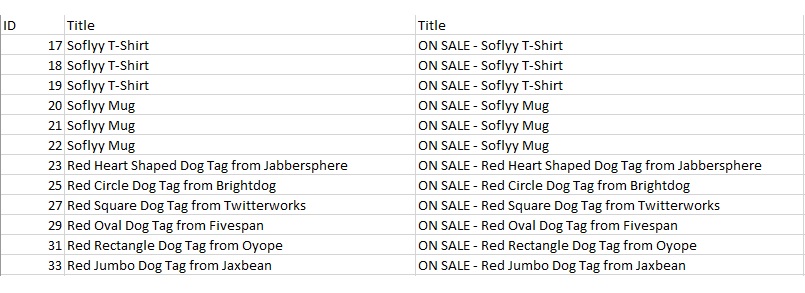
Next step, let’s copy all the values from your new column into the old Title column. But past them as values to remove the formula. And then delete your new column and don’t forget to save the file.
Finally, import your modified item file by following the steps below.
- Click All Export -> Manage Exports.
- You should view your product export at the top of the list in the Manage Exports screen.

3. Have look at the information under the Info & Options section, click on Import with WP All Import. This will start the import process.
4. In the New Import screen, click on Upload a file and choose your modified product file. After your file uploads, your screen will look like this:
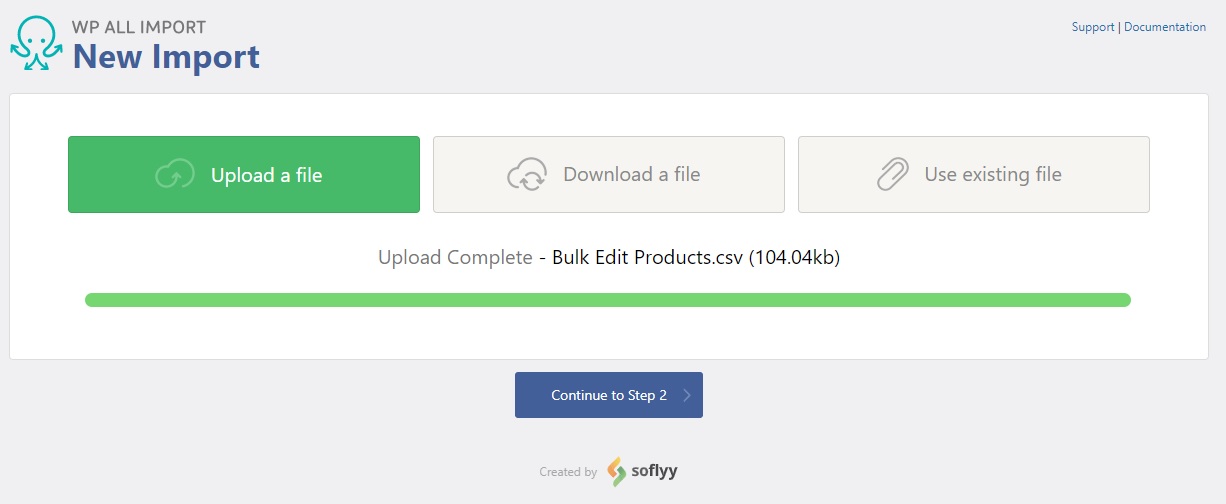
5. Click on the Continue to Step 2 button. Let’s keep hitting the Continue button for all subsequent screens until it takes you into the Confirm & Run screen, where you simply click the Confirm & Run Import button.
After the import process has been completed, you will get a confirmation like this:

At the moment, whether you want to check the influenced products in WooCommerce, you will see that they have all been updated with the “ON SALE – “ prefix:

As you can see, this solution helped you save a lot of time and effort!
If you are wondering how did WP All Import know to automatically tackle all of those import screens where you clicked Continue? We will give you a special explanation.
Since WP All Export and WP All Import are specially designed to combine together. Therefore, once your import file provides the required information, WP All imports determine what to do with it.
For more information on exporting products, see Easily Export WooCommerce Products to XML & CSV.
WooCommerce Order Exports
And how to export orders? In order to export orders, you just do the same way as the previous exports. Similarly, you need to choose Woocommerce Orders as the post type.
Except for the product-specific section on the Google Merchant Center. All processes that we did with customers and products will be applied to orders. However, there are the biggest differences with order exports including:
- Order information is often required for external sales reports. Whether the target system offers excellent data manipulation tools, you can regularly export orders in CSV or Excel by using the default processes. However, if you are responsible for the data manipulation, you can need the support of more intensive features such as WP_Query and PHP functions.
- In addition, migrating data from one store to another store can be more complicated for order data than customer or product data since order data has dependencies on these other data elements. Especially, WP All Export also offers a lot of powerful features to handle these issues.
We can’t generalize all features in today’s blog, however, we will analyze one of them. Let’s take a look.
Custom Fields Using PHP
You will find it easy to generate custom fields in Wp All Export. For example, in order to merge a customer’s first and last billing names into a single name file, you only need to click on the “Add Field” button in the Drag and Drop interface.
This will bring you to the Export form. You define your new export field by using these steps:
- Choose the Custom Export field option.
- In the given text area, drag and drop the “Billing First Name” and “Billing Last Name” fields from a list of Available Data Customer, And then leave a space between them.
- In the Column Name box at the top, type ” Name“.
Now, have a look at your form that might look like this.

Now, if you hit the Preview button, you will view that the Name field will display the combination between the first and last billing names.
Nevertheless, sometimes this kind of simple custom field is not enough. You can ignore the preview( if open) then click on the “Save” button to finish.
.It supposes that if you would like to add a shipping method to your order based on their weight. In case the order weights are less than 10Ibs, it should be sent by using “USPS“. In the second case, if its weight is between 10-30Ibs, “DHL” will be a valid method. And finally, when the order is heavier than 30Ibs, it should be sent through ‘Knight-Swift Freight’.
Here’s how to do this:
- Click on the Add Field button to re-open the Add Field to Export form.
- Choose the Custom export field option.
- At the given text position, type “[output_shipping({Weight})]” without the quotes. This is a function call. You should pay attention to the Weight field that is surrounded by curly brackets.
- Let’s enter the following PHP function in the Function Editor between the PHP tags:
function output_shipping($weight){
if($weight <= 10) {
return “USPS”;
} else if ($weight > 10 && $weight < 30) {
return “DHL”;
} else if ($weight >= 30) {
return “Knight-Swift Freight”;
}
}
- Click on the Save Functions button.
- In the Column name box, type ” Shipping Method“.
Now, it might look like this.

Remember to click on the “Save” button to save the field. This will bring you to the Drag and Drop interface, let’s drag the Items -> Advanced -> Weight field from the Available Data panel into the column selection position and then click on the Preview button:
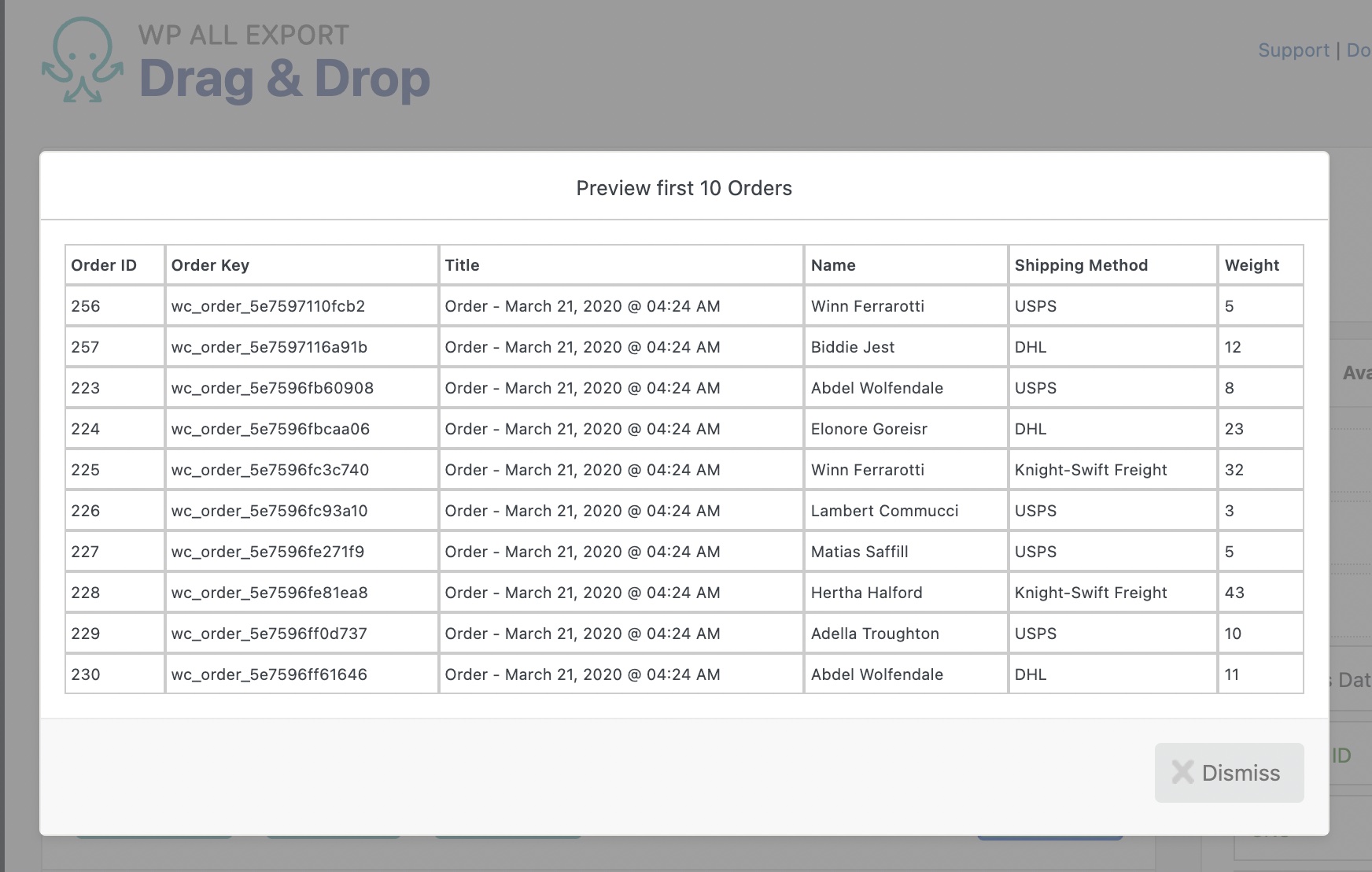
We have just covered the contents of the Shipping Method column, the output_shipping function will display to be working correctly.
Wrap up
We have just provided all steps to export data from Woocommerce by using WP All Export. Hopefully, this method is useful for your online store. In addition, through this tutorial, you can master all problems related to data export from Woocommerce.
If you have any queries or need our assistance, please leave a comment on the box below. We will give you support as soon as possible. Moreover, if you want to refer to more third-party plugins to export vital information apart from Woocommerce, let’s access WordPress Export Plugin.
- Integrating TikTok Icon in Jetpack Social Navigation Using Genericons - July 11, 2025
- Understanding the JInstaller: :install: Error – SQL Duplicate Column Name ‘catid’ - July 11, 2025
- Joomla Web Hosting: A Comprehensive Guide - April 3, 2025

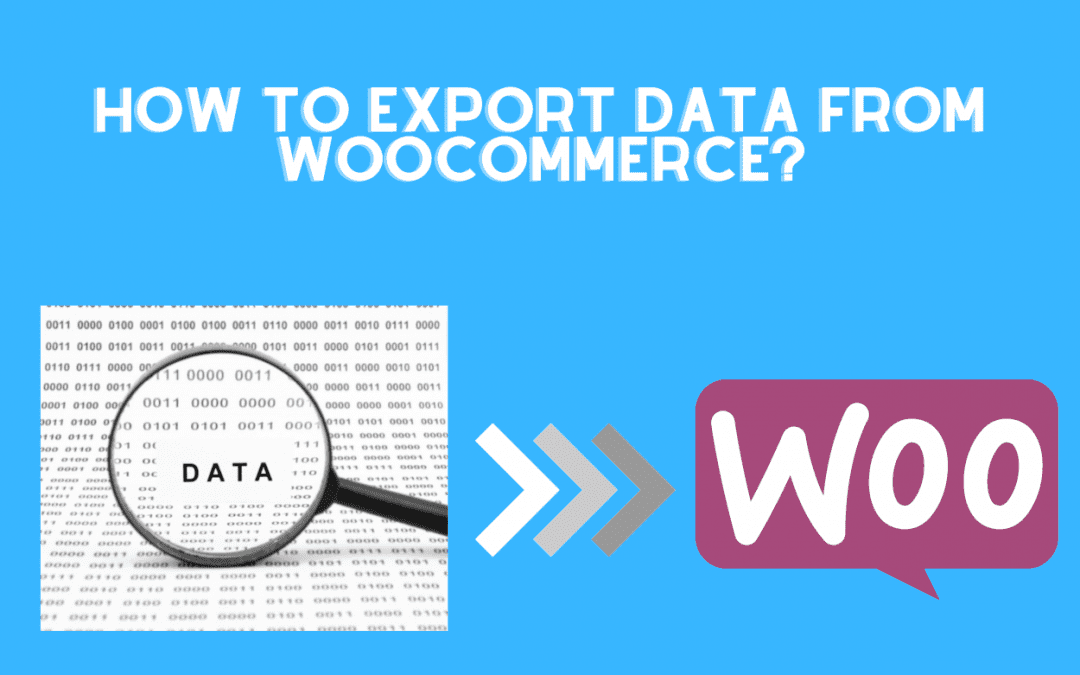
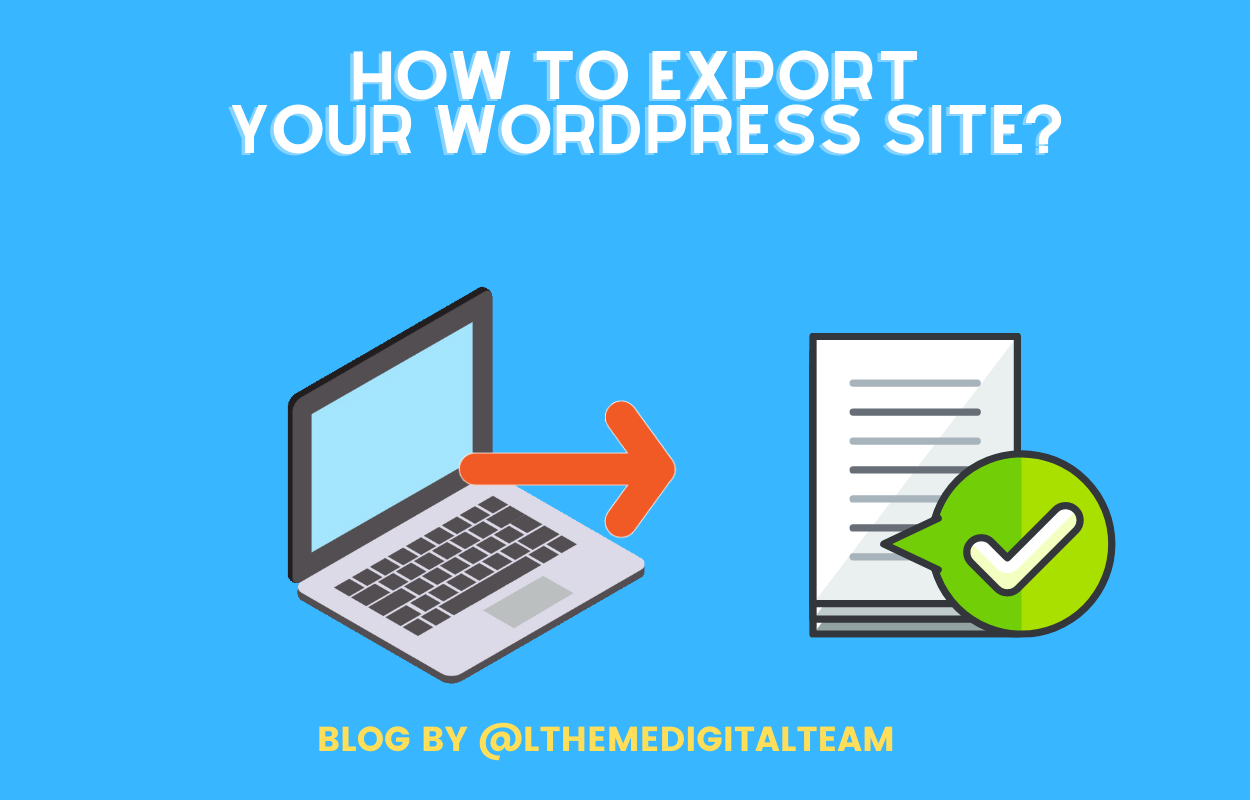







Recent Comments